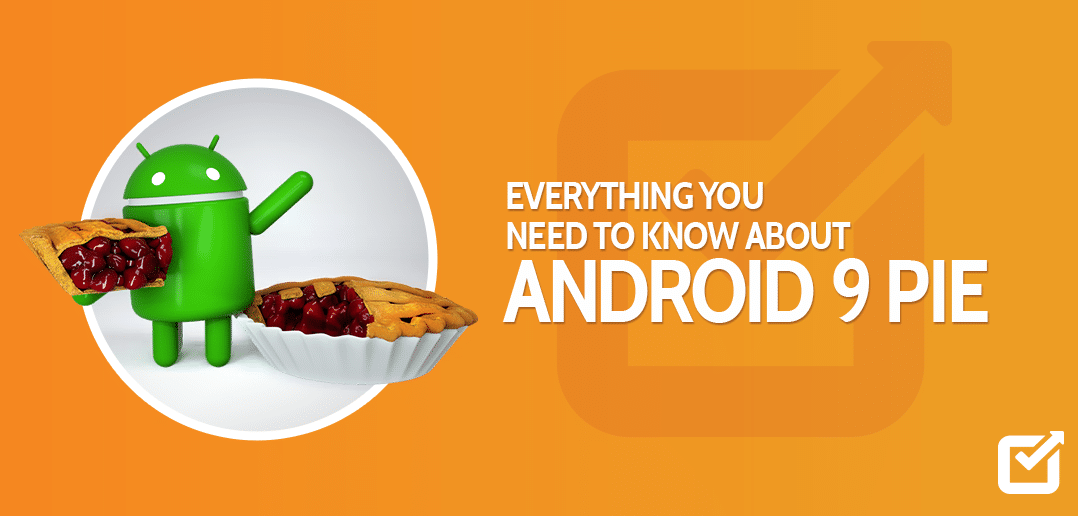Ever feel like you’re constantly chasing the next big social media trend? Algorithms are tricky things, and keeping up with what grabs your audience’s attention can be a full-time job.
That’s why having a rock-solid content plan is more important than ever in 2024. We’re talking about ditching the random posts and hit-or-miss updates. Attention spans are shorter than ever, so successful brands use strategic content planning to grab attention and keep their followers engaged.
But here’s the thing: catchy captions and cool visuals are just one piece of the puzzle. You need a system to keep everything organized and track how your plan is working. That’s where social media schedulers come in – they help you plan, schedule, and analyze your posts for maximum impact.
Ready to step up your social media game in 2024? We’ve got a unique and super simple 29-step content planning strategy waiting for you. Get ready to take your chosen platforms by storm!
Let’s begin!
What Is Social Media Content Planning
Social media content planning is organizing and strategizing content creation, scheduling, and distribution across various social media platforms. This involves understanding your target audience, setting clear goals, and choosing the right types of content to engage and attract followers.
By planning your content, you can ensure a consistent and cohesive brand presence online, which helps build trust and loyalty with your audience.
Take Control of Your Social Media
Schedule & manage your social media content with ease using Social Champ’s powerful tools. Start your free trial!
A key part of content planning is creating a content planning calendar. This calendar outlines what content will be posted, when it will be posted, and on which platforms. It helps you stay organized and ensures a steady stream of content that is ready to go.
Additionally, a well-structured content plan allows you to align your social media activities with your broader marketing goals and campaigns, ensuring that every piece of content supports your overall strategy.
Another important aspect of social media content planning is analyzing the performance of your posts. To achieve better results, you can follow content planning tips by regularly reviewing metrics such as likes, shares, comments, and engagement rates. This will give you insights into what types of content resonate most with your audience.
Related Article: Social Media Intelligence: What Is It & Why You Need It
Why Content Planning Is Important
Nowadays, social media is a powerful source for brands and creators. With endless scrolling feeds and ever-changing algorithms, simply posting content isn’t enough.
To truly conquer social media and engage your audience, you need a strategic plan – and that’s where content planning comes in. Here’s why content planning is vital for your social media success.
Ensures Consistency
Consistency is key to building a recognizable brand on social media. By planning your content in advance, you can ensure a steady stream of posts that reflect your brand’s voice and message.
This regularity helps keep your audience engaged and aware of your presence, preventing your brand from fading into the background amidst the constant noise of social media updates.
Optimizes Posting Schedules
Understanding when your audience is most active on social media can significantly impact your engagement rates.
Content planning allows you to schedule your posts for optimal times, ensuring that your content reaches your audience when they are most likely to see and interact with it. This strategic timing can lead to higher engagement and better overall performance.
Collaboration Made Easy
Content planning isn’t a solo act. Involving your team in the planning process fosters collaboration and ensures everyone is on the same page.
A well-defined content plan provides clear direction for designers, writers, and social media managers, streamlining the content creation process.
Scalability for Growth
As your brand grows, so should your social media presence. A well-structured content plan allows you to scale your content strategy easily. You can incorporate new content formats, increase posting frequency, and expand your reach to new platforms without sacrificing quality or consistency.
Improves Analytics and Performance Tracking
By planning and scheduling your content, you can better track its performance over time. Analyzing metrics such as likes, shares, comments, and engagement rates helps you understand what types of content resonate most with your audience.
This data-driven approach allows you to refine your content strategy, optimizing for better results and higher engagement.
Generates Leads
Content planning allows you to tailor your posts to address your target audience’s specific needs and interests. By understanding your audience’s pain points, preferences, and behaviors, you can create content that resonates with them and encourages interaction.
Targeted content will attract potential leads genuinely interested in your products or services.
Helps in Creating Higher-Value Content
Planning your content in advance allows you to focus on quality rather than quantity. You can take the time to research topics, create well-crafted posts, and ensure that each piece of content provides real value to your audience.
High-quality, relevant content will likely engage your audience, encourage shares, and enhance your brand’s reputation.
Related Article: Twitter Blue – All You Need to Know in 2024
Content Planning for Social Media in 19 Steps
A strategic content plan is essential to stand out and capture your audience’s attention truly. Here are 19 crucial steps to create a winning plan and propel your brand or message to the forefront of your chosen platforms. Let’s explore it one by one.
Define Your Target Audience
Defining your target audience is the foundation of effective content planning for social media. Start by creating detailed buyer personas that outline your ideal customer’s demographics, interests, pain points, and online behavior.
Understanding your target audience helps you tailor your content to meet their needs, preferences, and challenges. This ensures your content resonates with your audience, leading to higher engagement and better results.
Create a Detailed Content Calendar
A detailed content calendar is essential for organizing and planning your social media posts. Include the date and time of each post, the platform, the type of content (such as an image, video, or blog post), and any relevant hashtags or links.
Plan your content based on your audience’s preferences, industry trends, and marketing goals. A content calendar helps maintain consistency, avoids last-minute stress, and ensures your content strategy remains cohesive.

A snapshot of Instagram Identify Content Themes
Establishing content themes helps maintain variety and relevance in your social media content. Identify overarching topics or categories that align with your brand, such as educational content, behind-the-scenes insights, product highlights, customer testimonials, or industry news.
Having clear content themes guides your content creation process and ensures that your posts address different aspects of your audience’s interests and needs.
Monitor Analytics to Track Performance
Analytics play a crucial role in content planning by providing insights into how your content is performing. Use social media analytics tools to track key metrics, such as reach, engagement, clicks, conversions, and audience demographics.
Analyze this data regularly to identify trends, understand what content resonates with your audience, and make data-driven decisions to optimize your content strategy for better results.
Benefit from Paid Advertising
Paid advertising on social media platforms can complement your organic content strategy and reach a broader audience. Invest in targeted paid ads based on your audience’s demographics, interests, and behaviors.
Use features like custom audiences, lookalike audiences, and retargeting to maximize the effectiveness of your paid campaigns. Monitor the performance of your ads and adjust your targeting and messaging as needed to achieve your advertising goals.
Use A/B Testing for Optimization
A/B testing involves comparing two social media posts or ad versions to determine which performs better. Test elements, such as headlines, images, calls-to-action, or posting times, to identify what resonates most with your audience.
Use the insights from A/B testing to optimize your content, improve engagement, and achieve better results over time.
Conduct a Content Audit
A content audit involves reviewing your existing content to assess its performance and identify areas for improvement. Estimate relevance, engagement, quality, and alignment with your brand and audience.
Identify top-performing content that can be repurposed or updated, as well as gaps in your content strategy that need to be addressed. A content audit helps you optimize your content strategy and make informed decisions for future content creation.
Incorporate User-Generated Content
User-generated content (UGC) adds authenticity, credibility, and engagement to your social media strategy. Encourage your audience to create and share content about your brand, products, or services.
Showcase UGC through posts, stories, or dedicated UGC campaigns. Engage with and appreciate your community’s contributions, as UGC fosters a sense of belonging and strengthens relationships with your audience.
Schedule Posts in Advance
Use social media scheduling tools to plan and schedule your posts in advance. Create a content calendar and schedule posts based on optimal posting times for each platform and your audience’s online activity.
Scheduling posts ensures consistency, saves time, and allows you to maintain an active presence even during busy periods. Utilize scheduling features to plan content for special events, promotions, or campaigns in advance.
Use Social Media Polls and Surveys
Use social media polls and surveys to engage your audience and gather valuable insights. Create polls on topics related to your industry, products, or services to encourage participation and feedback from your followers.
Use survey tools to gather more in-depth feedback or conduct market research. Analyze the responses to polls and surveys to understand your audience’s preferences, interests, and opinions. You can then use this data to inform your content planning decisions.
Improve Branding
Effective content planning is crucial for building and maintaining a strong brand identity. You create a cohesive and recognizable presence across all social media platforms by consistently posting content that aligns with your brand’s voice, values, and aesthetic.
Consistent branding helps establish trust and loyalty among your audience, making your brand more memorable and reputable. Regularly review your branding guidelines and ensure all content, from visuals to copy, adheres to these standards.
Use Instagram/Facebook/Pinterest Stories
Stories on Instagram, Facebook, and Pinterest offer a dynamic way to engage with your audience through temporary yet impactful content. Plan your Stories to include behind-the-scenes moments, product launches, customer testimonials, and real-time events.
Utilize interactive features like polls, questions, and swipe-up links (where applicable) to encourage interaction and drive traffic to your website or other content. Consistently use Stories to keep your audience engaged and informed about your brand’s activities.
Write Compelling Copies
Compelling copies are essential to capture your audience’s attention and drive engagement. Focus on crafting clear, concise, and persuasive messages that resonate with your audience. Use a conversational tone that reflects your brand’s personality and includes strong calls-to-action (CTAs) to encourage desired responses.
Whether it’s a caption for an Instagram post or a tweet, your copy should be engaging and tailored to the specific platform and audience. Avoid jargon and keep your messaging simple and relatable.
Plan For Seasonal and Timely Content
Incorporating seasonal and timely content into your social media strategy helps you stay relevant and capitalize on current events. Plan your content around holidays, seasonal trends, industry events, and significant dates relevant to your audience.
This proactive approach allows you to create timely and engaging content, boosting its potential reach and impact. Use a content calendar to schedule these posts in advance, ensuring you don’t miss any important opportunities.
Create Engaging Visuals
High-quality visuals are essential for capturing attention and driving engagement on social media. Plan your visuals to be eye-catching and aligned with your brand’s aesthetic. Use professional photography, graphic design tools, and video content to create diverse and appealing visuals.
Incorporate elements like infographics, animations, and GIFs to add variety and interest. Engaging visuals attract attention and convey your brand message more effectively.
Plan for Crisis Management
Having a crisis management plan is vital for handling unexpected issues that may arise on social media. Prepare guidelines for addressing negative comments, misinformation, or any other crisis impacting your brand’s reputation.
Assign roles and responsibilities within your team and establish a clear protocol for responding quickly and appropriately. A well-prepared crisis management plan helps you maintain control and protect your brand’s integrity during challenging situations.
Choose Your Social Media Platforms
Selecting the right social media platforms is essential for reaching your target audience effectively. Not every platform will be suitable for your brand, so focus on those where your audience is most active. Research each platform’s demographics, features, and content types to determine the best fit for your brand.
For example, Instagram and Pinterest are great for visual content, LinkedIn is ideal for B2B marketing, and TikTok can effectively reach younger audiences with short-form video content.
Research Current Trends & Events
Staying updated on current trends and events helps you create relevant and timely content. Regularly research industry trends, popular hashtags, and viral topics to incorporate into your social media strategy.
Engage with trending conversations and adapt your content to reflect the latest happenings in your industry. This will not only keep your content fresh and engaging but also position your brand as an active participant in relevant discussions.
Review and Adjust Your Plan
Content planning is not a one-time task but an ongoing process that requires regular review and adjustment. Periodically assess your content plan to align with your evolving business goals, audience needs, and market conditions.
Be flexible and willing to change based on performance data, feedback, and new opportunities. Continuously improving and adapting your content plan ensures that your social media strategy remains effective and relevant.
Featured Article: 20+ Social Media Engagement Post Ideas for 2024
7 Free Content Planning Resources
Planning your content effectively is crucial for maintaining a consistent and engaging online presence. Here are seven free content planning resources that can help streamline your workflow and enhance your content strategy:
Trello
Trello is a visual project management tool that organizes content ideas and planning using boards, lists, and cards. It’s highly flexible, allowing you to create content calendars, set deadlines, and collaborate with team members visually intuitively.

Trello Google Sheets
Google Sheets is a spreadsheet tool perfect for creating and managing content calendars. It offers real-time collaboration, extensive customization options, and a variety of templates to streamline your content planning process.

Google Sheets Canva
Canva offers a free content calendar template that can be customized to suit your needs. It’s ideal for visually planning your content, designing social media posts, and collaborating with team members, making content planning efficient and creative.

Canva CoSchedule
CoSchedule provides a free marketing calendar that centralizes your content planning. It integrates seamlessly with tools like WordPress and social media platforms, helping you organize and manage your content efficiently from one place.

CoSchedule ContentCal
Content Cal is a digital content planning tool that simplifies the process of scheduling and managing content across multiple platforms. It offers a free plan with essential features for creating and organizing your content calendar, streamlining collaboration, and ensuring consistency.

ContentCal Asana
Asana is a project management tool that helps you plan, organize, and manage your content production. With task creation, deadline setting, and progress-tracking features, Asana is a comprehensive solution for keeping your content projects on track.

Asana Ahrefs
Ahrefs offers a range of SEO and content planning tools to help you identify content opportunities and organize your planning. While its full suite is premium, Ahrefs provides free tools like the Ahrefs Webmaster Tools for site analysis and keyword research, aiding in strategic content planning.

Ahrefs
In Conclusion
Content planning for social media in 2024 is an intricate and dynamic process that requires careful strategizing and ongoing optimization. You can craft a robust content strategy that enhances your brand’s visibility and engagement by defining your target audience, creating a detailed content calendar, and using content planning tools like analytics and A/B testing.
Incorporating user-generated content, engaging visuals, and timely posts ensures your content remains relevant and captivating. Regularly monitoring performance and being flexible enough to adjust your plan based on data and trends will keep your social media efforts effective and aligned with your marketing goals.
Frequently Asked Questions
1. How Do You Make a Content Plan?
With this knowledge, brainstorm content ideas that will resonate with your audience and support your objectives. Create a content calendar that outlines when and where each content will be published, ensuring a consistent schedule.



















3 thoughts on “Top Social Media Content Planning Trends for 2024: A 19-Step Action Plan”
I love how you’ve broken down the latest trends and provided actionable steps to incorporate them into our strategy.
The focus on sustainable and ethical content is such a breath of fresh air. It’s great to see these values getting the spotlight in content strategies.
Great article! The focus on integrating user-generated content is especially insightful.